Millions of aspiring entrepreneurs have great ideas, but only a few turn them into successful companies. Over 500,000 businesses launch monthly, yet 50% fail within five years. A significant reason is the lack of a solid growth plan.
A well-structured plan helps you scale, allocate resources effectively, and sustain long-term success.
That said, in a competitive industry like SaaS, only distinct strategies can ensure you don’t vanish in the crowd. One key decision is whether you want to bootstrap your business or raise funding, as this impacts your marketing budget and overall scalability.
Regardless of funding, your business must cover costs, generate profits, and sustain your business successfully. This must happen, year-on-year, for your business’s long-term health and growth.
How do you ensure this year-on-year growth? The answer is these following bullets:
- Have a marketing roadmap aimed at growth
- Chart out a go-to-strategy aimed at growth
- Plan for acquiring your first customers and growing your customer base
- Identify tools that will help you achieve your marketing goals and attain business growth
Let’s explore these in detail, starting with a marketing roadmap.
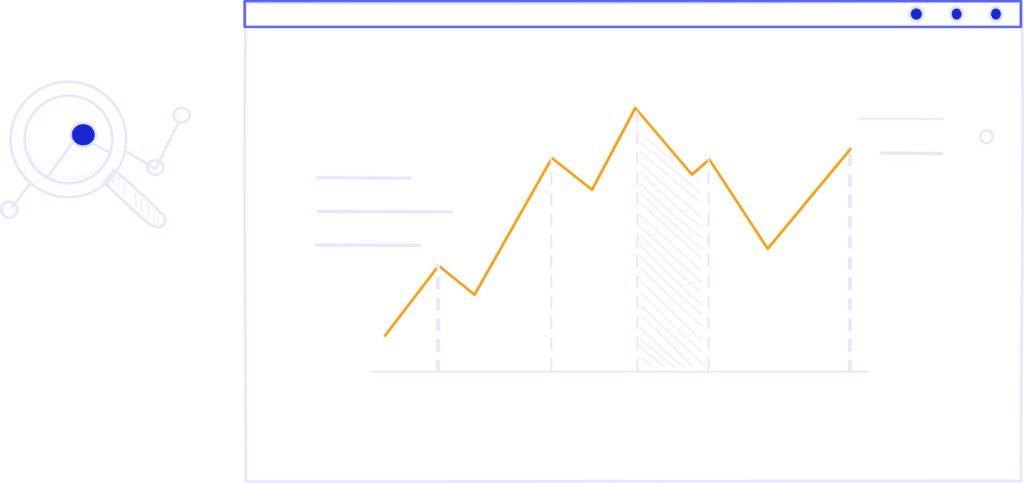
Building a Marketing Roadmap
All marketers need a map they can follow to reach their ultimate objective—growth.
A marketing roadmap outlines key focus areas, micro-level goals, and initiatives needed to achieve strategic growth. It aligns marketing objectives with cross-functional teams, business goals, and customer needs. It also defines how you’ll meet customer demands, communicate your solution’s value, and price your product.
Let’s break down its key components for 2025.
Step #1 Identifying your target market and ideal customer profile (ICP)
If you’re marketing to everyone, you’re marketing to no one.
More traffic on your website does not mean higher conversions. For example, people disinterested in reading aren’t likely to sign up for your monthly blog newsletters. They are not your target market.
To reach the target market, segment your most important users—those who are highly likely to buy, highly likely to make repeat purchases, and very likely to spend a higher amount than the average order value—as your target market.
This will make your business grow faster without you having to increase your marketing spend.
A well-defined target market helps you:
- Focus your marketing budget on high-value customers
- Improve conversion rates by tailoring your messaging
- Build a product that solves real problems for real people
But how do you identify your target market? You can segment your audience based on the following factors to build an ideal customer profile (ICP)
- Demographics: You can use age, gender, family size, education, ethnicity, and other demographic factors to segment your audience.
- Geographic: Country, region, climate, and other information about where your users live.
- Psychographic: Values, lifestyle, habits, motivations, etc.
- Tech stack & preferred channels – Are they on LinkedIn or TikTok? Do they read industry blogs?
Here’s an excellent template for an ideal customer profile:
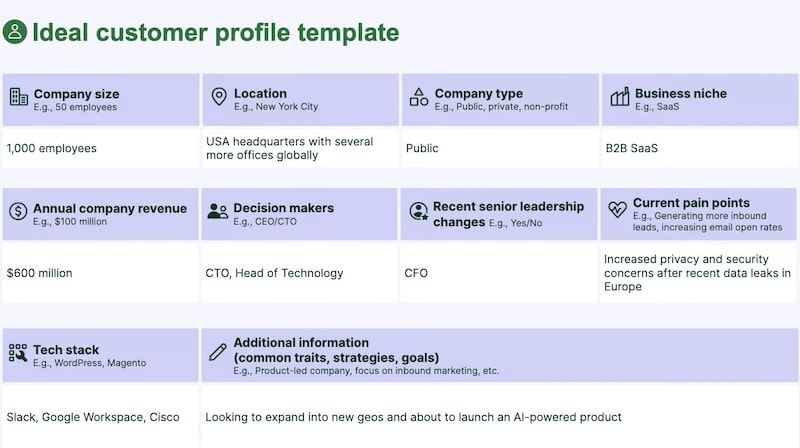
If your target audience is “everyone,” you are likely to miss out on conversions if you cast your net wider than you should.
Pro tip: Identify your target audience using feedback from focus groups or surveying current buyers and potential users through on-site survey services like FigPii and SurveyMonkey.
Step #2 Achieving product-market fit
Product-market fit (PMF) is the moment when your product perfectly solves a problem for a well-defined audience. If you don’t get this right, no amount of marketing will save your SaaS startup. In fact, legendary investor Marc Andreessen calls product-market fit “the only thing that matters” for a startup’s success.
It is a key step in the growth of any new venture, which relies on early adopters for feedback and tests their willingness to buy their product or service. While estimating the product-marketing fit, the company determines whether the wider audience is ready to accept its offerings.
“If you’ve achieved the product-market fit, you need to figure out the main bottlenecks in your growth funnel to grow. Once you’ve figured out these bottlenecks, you need to prioritize them and build strategies to remove each of these bottlenecks.”
In short, product-market fit happens when your SaaS product provides substantial value to customers.
Fortunately, identifying it isn’t difficult. Here are some ways to determine your product-market fit:
- Define the problem that your product will solve. Write down the challenges that your potential customers face, and create a simple business model outlining your product’s capabilities and how it addresses these challenges or customer pain points.
- Test your claims and ideas before rolling them out. Once you’ve decided to tackle the risk areas with new solutions, test those solutions. For example, instead of unthinkingly claiming that your online presence will grow through content marketing, try testing how content marketing works for you before making it a part of your marketing strategy.
- First, the waters can be tested by introducing solutions to a smaller market. Once you understand whether the feature or solution efficiently solves user pain points and who the product is truly valuable to, you can decide to introduce it entirely to the larger market.
Here are key signals that show you’re on the right track:
- High retention: Customers keep coming back, and churn is low.
- Organic growth: People are talking about your product without heavy marketing spend.
- Users say they’d be “very disappointed” without it: Sean Ellis, the growth guru behind Dropbox, found that if at least 40% of surveyed users would be “very disappointed” without your product, you’re likely at PMF.
Use NPS and customer satisfaction surveys: Go by the 40% rule here. If 40% of your early adopters are ‘very happy’ with or consider a new feature on your product a ‘must have’, consider this feature a product/market fit.
Step #3 Crafting a winning branding strategy
Branding isn’t just about logos or color schemes—it’s about how customers feel when they interact with your business. It communicates your product’s benefits to your audience and shapes their perception of your brand.
At the same time, you need to make sure that your messaging magnifies your product’s uniqueness.Take Slack, for example. Before its launch in 2013, workplace communication tools were clunky and uninspiring. Slack introduced a fun, friendly, intuitive brand that challenged corporate norms. The result? Rapid adoption and a $27.7 billion acquisition by Salesforce.
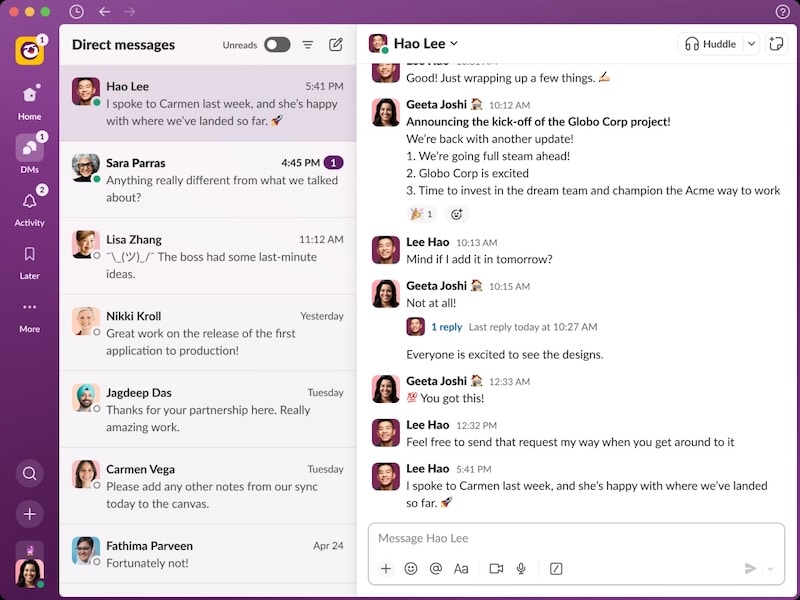
Slack stands out with its cheerful, quirky voice, making serious discussions feel informal and light. Emojis enhance communication, appealing to a generation that shortens words and emotions. Its engaging design makes it addictive, successfully replacing the appeal of emails.
How do you craft a winning branding?
Start by defining your brand identity, including:
- Mission and vision: What change are you driving?
- Core values: What principles define your business?
- Tone and personality: Are you serious like IBM or playful like Mailchimp?
- Visual identity: Logos, typography, and color schemes that reflect your message.
Once you define your brand identity, craft a compelling value proposition and positioning based on the above.
Your positioning should answer one question: Why should customers choose you over competitors?
- Blue Ocean Strategy: Find a gap in the market and dominate it.
- Category Creation: If you can’t beat them, redefine the playing field. (For example, Notion combined documents, wikis, and project management into a single tool.)
- Emotional Connection: People buy stories, not just products. Apple sells creativity, not just computers.
SaaS branding is about making a promise to your users and keeping it. You build trust, loyalty, and long-term growth when you deliver on that promise.
Step #4 Picking appropriate product pricing
Setting a product’s price isn’t a random decision. It’s a tough choice that considers factors like what customers are willing to pay, competition, the costs to make and maintain the product, and other important factors. You must also consider how you want users to perceive your product: premium, affordable, or luxury.
A poorly planned pricing model can create friction, drive away potential customers, or limit long-term scalability.History is full of companies that have won or lost based on pricing. Take Netflix: When it shifted from DVD rentals to a subscription model in 2007, it changed media consumption forever. However, when it tried to split its DVD and streaming services in 2011, causing a 60% price hike, it lost 800,000 subscribers in a quarter.

“Finding the right balance between value and revenue – your ability to help customers and be fairly compensated for that help – will make or break your SaaS company.”
In SaaS, business growth depends heavily on increasing MRR (Monthly Recurring Revenue), and pricing plays a significant role. Remember that it shouldn’t reflect your costs or match competitors’ prices when deciding on your pricing. Instead, it should help boost your company’s profitability.
So, how do you price your SaaS product? Take note: To price your SaaS product, you must understand how users perceive its value. This is key to determining the right price. Use price sensitivity data to gain insights—this can show if your product is priced too low or if certain plans can handle a price increase without increasing churn.
- Price as per product versions: Allow the customer to pick what he wants. For example, you could label your product as ‘regular’ and ‘premium.’ At a movie theatre, for example, people have the option to choose from regular to executive to VIP seats as per their preference. Ford’s pricing is another example of pricing based on the version of the car a user is willing to buy.
- Provide ‘tiered pricing’ option: A tiered pricing considers that not all product features are helpful for everyone. Therefore, brands offer different feature sets at various price points. For example, Optinmonster offers four plans: Growth, Pro, Plus, and Basic. The Basic plan is priced at $9 monthly for beginners, while the Growth plan is designed for businesses needing advanced conversion features.
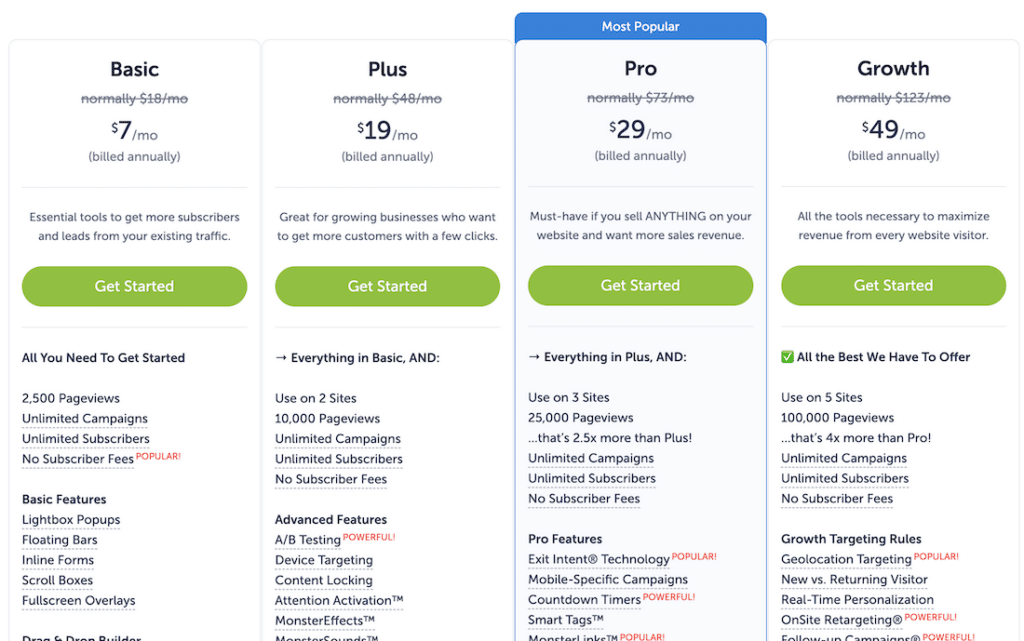
- Value-based pricing: As pointed out earlier, users’ willingness to pay is essential in determining product pricing. SaaS businesses understand this well and often price their products based on the value the customer perceives them as worthy of. Of course, this model works when the product’s perceived value is higher than its cost.
Make sure you’re not just setting up pricing models in the dark. Use these methods to optimize your strategy:
- A/B Testing: Test different pricing models on user subsets.
- Customer Surveys: Ask existing users how much they’d pay (Van Westendorp’s Price Sensitivity Meter is a great method).
- Competitive Analysis: Track how your competitors price their products and position yourself strategically.
Defining Your Go-to-Market Strategy
A go-to-market (GTM) strategy isn’t just about knowing your audience—it’s about figuring out how to reach them effectively and convince them to choose your product.
Even the best products fail if they don’t reach the right people at the right time with the right message. Take Google Glass, a promising innovation that flopped because it lacked a clear market strategy. On the other hand, Notion grew from a small productivity tool into a giant by leveraging innovative marketing channels and community-driven growth.
Your GTM strategy should answer questions like:
- Which channels will you use to reach your target users? (SEO, paid ads, partnerships, etc.)
- What messaging will resonate with them the most? (Affordability, ease of use, exclusivity, etc.)
- How will you position yourself in the market? (Are you the cheapest, most premium, or easiest to use?)
Based on these answers, SaaS startups typically adopt one of three GTM strategies:
The Dominant Strategy: Win with the Best Solution
A dominant strategy works when your product is superior to competitors.
The key questions here are:
- Does your product solve the target market’s problem better than any other competitor products?
- Is your target audience price-sensitive and prefers a lower price?
If the answer to both these questions is yes, you can opt for a dominant go-to strategy.
What model should you adopt for growth? In the context of SaaS, if you are deploying a dominant strategy, your go-to model should be based on ‘freemiums’ and ‘free trials.’ This is because you want your price-sensitive users to try out your product and understand that it solves their pain points best.
Best for: Startups that solve a problem better than anyone and have a price-sensitive audience.
The Differentiated Strategy: Own a Niche & Charge More
This strategy is suited to those players in the market who want to position themselves as ‘the best product’ in the market. When you deploy this strategy, you establish that your product is not for everyone. And that it is ‘expensive’ because it is better than the rest.
If your answers to these questions are yes, this is the right approach:
- Are you offering a niche product, or would your users have a superior experience of using your product?
- Is there an underserved or unexplored market willing to pay more for your premium product/service?
What model should you adopt for growth? For a differentiated strategy, one-on-one demos work best. Since niche audiences want to test a product before investing, personalized demos help build trust and highlight its uniqueness.
Best for: Premium products that deliver a superior experience.
The Disruptive Strategy: Simplify & Undercut the Competition
A disruptive strategy targets users who are over-served by existing solutions and offers a simpler, cheaper alternative.
Take Photoshop and Canva, for example. Photoshop is a powerful tool for professionals, but many users don’t need to use its complexity. Canva fills that gap by providing an easy-to-use, affordable design tool for non-designers.
Pro tip: If you’re disrupting a giant like Canva, focus on one key problem they overcomplicate and solve 10 times better and cheaper.
What model should you adopt for growth? The freemium model works best here because it attracts an overserved audience with a simpler, cheaper alternative. Your product should focus on excelling at one key function, even if competitors offer more features. For example, if your tool builds landing pages, it should outperform competitors in that specific task.
Best for: Startups that simplify an overly complex solution.
Growing your customer base
Once you have an action plan in place and clearly understand your most profitable target market, you can start planning how to acquire your first customers and grow your customer base. To get an insight into how important customer acquisition in SaaS is, check out this infographic.
Finding and acquiring your first customers
Winning your first 100 customers isn’t easy—it takes persistence, creativity, and a willingness to adapt. Many legendary companies struggled at first. Airbnb founders famously hosted a conference and rented out their own space, convincing people to list their homes. PayPal pays people to refer friends. Even Dropbox had to tweak its strategy before finding traction.
The good news is that, with the right techniques, you can attract early adopters and build momentum.
What are these techniques? Let’s read:
1. Tap into your network
Your first customers are likely people who already know and trust you—friends, ex-colleagues, LinkedIn connections, or people in your industry.
Here are some quick tips to help you tap into your personal network:
- Announce your launch on LinkedIn, Twitter, and relevant Slack or Discord groups.
- Offer an exclusive deal to your network in exchange for customer feedback.
- Reach out to potential customers and ask for referrals.
- Ask friends to refer your product to businesses they believe can benefit from it.
Start with your social circle, then ask your investors to spread the word about your product. If you have another business, tap into your existing customers. For example, if you built a Facebook Messenger chatbot and offered push notifications for e-commerce, introduce your new product to your current client base.
2. Engage in online communities and forums
Be where your potential customers hang out—Reddit, Facebook groups, Indie Hackers, and niche forums. But don’t just sell—provide value first.
Here are some actionable tips:
- Answer questions without pushing your product.
- Share behind-the-scenes insights from building your SaaS.
- Offer beta access to active community members and turn them into loyal customers.
3. Leverage Product Hunt and early adopter platforms
Platforms like Product Hunt and BetaList are goldmines for early adopters who love testing new products. A strong launch can generate buzz and bring in your first paying customers.
Here’s how to go about it:
- Craft a compelling story about why your product exists.
- Offer early-bird pricing to reward first adopters.
- Engage in the comments—answer questions quickly and show personality.
4. Build an irresistible lead magnet
People don’t buy from brands they don’t trust. A lead magnet—a free, valuable resource—helps you capture interest and nurture potential customers.
Here are some ways to leverage and entice potential customers with lead magnets:
- Create a free eBook, checklist, or tool related to your SaaS.
- Offer a free trial or freemium version with a substantial upgrade path.
- Use pop-ups, landing pages, and email automation to convert leads.
For example, HubSpot’s in-depth blog posts, free tools, and free marketing templates helped it attract thousands of early users, who eventually became paying customers.
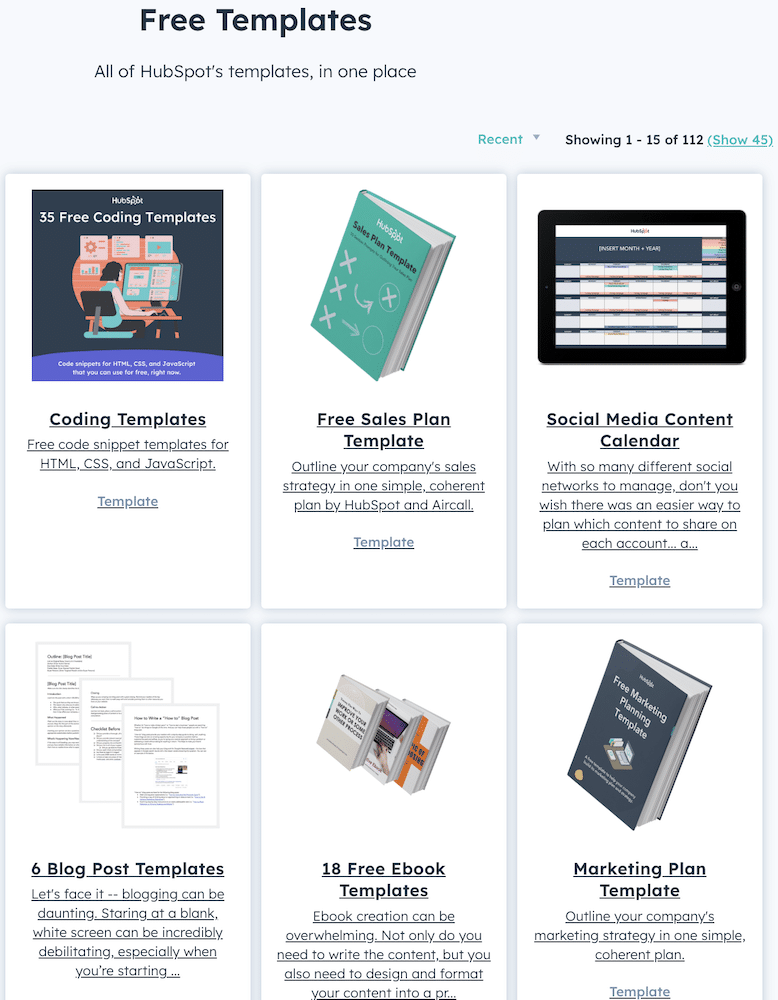
5. Use cold outreach the right way
Cold emails and LinkedIn DMs work when done correctly. Instead of blasting generic messages, personalize them based on the recipient’s pain points.
Personalization means tailoring your message to the recipient’s needs, challenges, or interests instead of sending a generic, sales pitch. People are more likely to respond when they see that you’ve taken the time to research them.
Here are some ways to personalize your cold outreach:
- Mention a recent activity (e.g., a LinkedIn post, a podcast they appeared on, a project they worked on).
- Highlight a pain point they’re likely experiencing and connect it to your solution.
- Keep it concise and value-driven—no one has time for long, vague messages.
Here’s a personalized cold outreach email template for your reference:
Subject: Loved Your LinkedIn Post—Here’s a Quick Idea
Hi [First Name],
I saw your LinkedIn post about struggling with lead conversion at [Company Name]—a challenge I hear from many [Industry] teams.
We recently helped [Similar Company] increase conversions by 35% using [Specific Strategy]. I’d love to share how you can apply the same approach. Would a quick 10-minute chat work next week?
Best,
[Your Name]
6. Partner with micro-influencers & bloggers
Influencers aren’t just celebrities. Industry bloggers, YouTubers, and Twitter, as well as thought leaders, can introduce your product to thousands of potential customers.
Here are some actionable tips for partnering with micro-influencers:
- Offer them free access in exchange for an honest review.
- Target smaller influencers (5k–50k followers) with engaged audiences.
- Focus on long-term partnerships, not just one-off shoutouts.
7. Run targeted paid ads (once you have some traction)
Once you know your audience, use pay-per-click campaigns on Google, Facebook, or LinkedIn to scale customer acquisition.
Instead of spending money unthinkingly, focusing on high-intent audiences and continuously optimizing your campaigns is best. Here’s how to make the most of it:
Start with retargeting ads for website visitors.
Not everyone who visits your site is ready to buy immediately. Retargeting ads help you stay at the top of your mind by showing ads to people who have already engaged with your website.

These ads work well because they remind potential customers of your product and nudge them to sign up or make a purchase.
Don’t forget to run A/B tests on ad creatives and landing pages.Even minor tweaks in your ad copy, images, or call-to-action (CTA) can significantly improve performance and optimize customer acquisition costs. A/B testing (split testing) allows you to compare different versions to determine what resonates best with your audience.
- Test different headlines, colors, and CTAs to see what drives more conversions.
- Experiment with different landing pages—one might highlight product features, while another focuses on case studies or testimonials.
8. Explore the power of content
Use your blog to attract customers by showcasing how your product solves their pain points. Share actual use cases to help users find quick solutions and position yourself as a thought leader in your industry, this can even attract enterprise clients.
Here are some quick tips:
- Write blog posts that answer common customer questions.
- Create case studies and success stories to showcase your product’s impact.
- Repurpose content into LinkedIn posts, Twitter threads, YouTube videos, and newsletters.
Pro tip: Use content to shape your brand voice like every innovative B2B brand. Slack, for example, keeps its tone fun and quirky. SaaS-based fraud detection tools, on the other hand, focus on industry-specific insights. Check their blogs, and you’ll see they discuss cutting-edge topics that establish authority.
9. Leverage competitors’ market
Your competitors have already identified and attracted your ideal customers. Instead of reinventing the wheel, learn from them and offer a better solution.
Here’s how to go about it:
- Analyze competitor reviews (Capterra, G2, Trustpilot) to find common pain points and position your product as a better alternative.
- Run competitor-targeted ads (Google Ads and Facebook allow you to target users who follow your competitors).
- Engage with their customers—comment on their social media posts, join their communities, and offer solutions.
Pro tip: Find out where your competitor’s product users hang out. Nurture these people by sending them free guides and ebooks about your product. Show them content that compares your product with the product they are currently subscribed to. Slowly nudge them towards a free trial. You could offer users a ‘zero migration cost’ benefit and make them switch instantly.
Retain your important customers
Acquiring customers is essential, but customer retention is the key to business success. Eighty percent of your business comes from 20 percent of your users, and your retention efforts should be directed toward keeping those 20 percent continuously engaged with your business.
How can you do this? Listed are a few techniques:
- Offers and discounts: Offer discounts to users who show an interest in your product during the beta stage to continue their subscription post-beta. However, while discounting, remember that it does not increase churn. Offer the right kind of discounts, and you are very likely to witness growth. For example, you could discount those willing to sign the annual contract. This discount is based on the principle of reciprocity, where the customer also offers his loyalty to reciprocate the discount.
According to the Crank Wheel website:
“The aim of a sales rep in a SaaS company isn’t solely to give the customer the best deal to get them on board; it’s to make them a customer for the right reasons — a customer that appreciates value over price. If a customer signs up for no reason other than price, they may not be there for the right reasons. Because if the price is the primary motivator, a customer will be happy to move to your competitor as soon as their deal beats yours.”
- Personalization: Generalized marketing doesn’t work anymore. Personalization is the key to winning and keeping your customers’ loyalty. Several email marketing automation tools leverage personalization and customization to keep their clients and their customer base happy. Consider this simple example: if your product, an email marketing tool, cannot segment users and send behaviorally targeted emails to them, wouldn’t it be a total failure? Here are a few examples of trigger-based email marketing campaigns that were an instant hit.
- Excellent customer service: Undoubtedly, customer service is key to the success of any SaaS product. Happy customers will likely stay loyal for longer, which is what excellent customer service ensures. This way, customer service can increase your customer’s lifetime value and help reduce churn. Ultimately, this spells growth for the business. Here’s more on retention optimization for SaaS and why it is the ultimate goal.
Beyond Pricing: Key Elements of a Winning SaaS Marketing Plan
Pricing is only one piece of the puzzle in SaaS marketing. A strong go-to-market plan requires a combination of user onboarding, inbound marketing, content strategy, and customer self-service.
Onboarding New Customers
Some of the best practices in onboarding that your go-to-market plan can include are mentioned as follows:
1. Don’t overwhelm new users
Never bombard the user with product information or talk about your product’s features.
Get specific about the user’s needs and show him how your product best meets those needs. Slowly, nurture him to explore other functionalities.
Here are some quick tips:
- Within the first few minutes, guide users to an “Aha!” moment (the moment they realize your product’s value).
- Use progressive disclosure—introduce features gradually instead of all at once.
- Offer a checklist or guided tour to help users take their first steps.
2. Use the phone—make onboarding personal
Email is not the best channel for onboarding, as the user might have questions he needs answered immediately. Live chat works, but the point is that the whole process is much more human on the phone.
Here are some quick tips to personalize your onboarding process:
- Call high-value leads to personally onboard them.
- Offer live chat or video calls for users who prefer text-based support.
- Use AI-driven chatbots for instant responses but provide an option to connect with a human.
3. Remove friction and make the whole process seamless.
You don’t need social share buttons while onboarding. Get rid of them. Make onboarding simple, sweet, and short.
Here are some tips to get it right:
- Cut unnecessary fields from sign-up forms (name and email should be enough to start).
- Remove distractions (no social share buttons during onboarding).
- Allow users to skip steps and come back later.
A great example is that of Duolingo.
The famous language app keeps onboarding ridiculously simple. Users choose a language, set a goal, and start learning within seconds—no complex setup, no unnecessary questions.
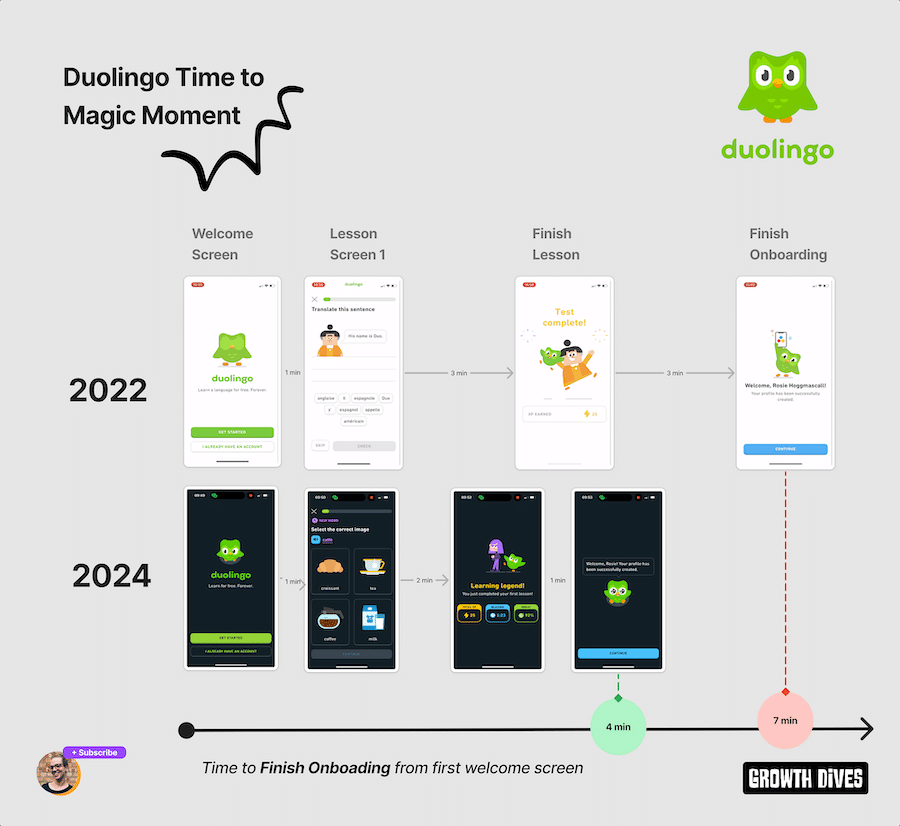
Fuel Customer Acquisition With Inbound and Content Marketing
Inbound and content marketing efforts make a business ‘searchable’ by users. These initiatives also help companies attract, acquire, engage, and retain their users, which leads to growth.
Here are some ways to do that:
1. Define your core content channels
Instead of spreading your efforts too thin, focus on 2 to 3 channels where your target audience is most active.
For example, promoting your webinar on your social media pages will attract more attention and users. Similarly, using Twitter to share case studies on your successful endeavors will promote your product and attract more users.
Here are some other channels you can utilize based on your use case:
- SEO-driven blogs for organic traffic.
- LinkedIn and Twitter posts for B2B engagement.
- YouTube tutorials and webinars for product education.
2. Automate marketing efforts to scale your business
Another critical component of content marketing that your go-to strategy must outline is your marketing automation strategy. As we’ve clearly pointed out before, quick growth is the key for SaaS companies. Marketing automation is the only way to attain content marketing objectives quickly.
Your content marketing strategy should include a clear marketing automation plan to drive fast growth. Identify what to automate—lead nurturing, onboarding, marketing campaigns, or customer lifecycle management. Choose a tool that fits your needs and budget—don’t overspend on features you won’t use.
Here’s how you can go about it:
- Automate lead nurturing emails based on user behavior.
- Set up chatbots to answer FAQs and guide users.
- Use retargeting ads to bring back interested visitors.
Leverage the Self-Service Model—Empowering Customers While Reducing Costs
It is convenient and profitable for users to explore, understand, and purchase independently. Studies show that 81% of customers prefer self-service to talking to a representative.
If your audience clearly understands your product offering, you can allow them to use it independently without offering external help explaining its functioning. This freedom to explore, understand, and finally purchase the product independently is a rewarding experience for both the user and the company. For the former, it means a better understanding of and familiarity with the product. For the company, it means ease of selling and fewer expenses.
However, your product must provide a frictionless experience for the customer to explore, use, and purchase independently. Otherwise, if you feel that your product is too complex for self-service, you must always have customer support to guide users.
Here are some ways you can enhance the self-service experience for your customers:
- Offer tooltips and interactive guides instead of relying on documentation.
- Implement an AI-powered help center with instant answers.
- Provide a freemium model so users can experience value before committing
Pro tip: Offer human support, especially for complex B2B solutions. You can do this by adding a live chat widget for quick questions or offering a community forum where users help each other.
Four Powerful Tools to Achieve Your Marketing Goals and Drive Growth
Your growth plan should identify the best tools your teams would use to attain all their objectives. Several tools are available in the market that can help marketers research, plan, and execute plans, as well as measure the results of their efforts. Some of these are listed as follows:
- Google Analytics: GA4 is a blessing for any business. It is a simple tool that every marketer is well-versed in and uses for research and analysis. GA4 does everything from identifying new and repeat users to understanding user behavior on your website. Moreover, you can set up advanced conversion funnels in GA4 to see how efficiently your campaigns convert users at each funnel stage.
- Trello: With Trello, organizing your marketing tasks is as easy as pie. With Trello, you can allocate tasks to your team and keep a timely check on work-in-progress and completed tasks. It’s all so simple that you need not keep following up with team members every hour and rather focus on the core functions of marketing. That’s why you need Trello if you are a rapidly growing business.
- Social Media Management Tools: Social media management platforms, such as Sendible, Buffer, Hootsuite, etc., automate social media marketing. They are necessary for business growth because manual marketing can be overwhelming when your user base increases and you are present on all social media channels. These platforms streamline your efforts on every front, from publishing social media content to tracking campaign results to optimizing campaign performance.
- A/B Testing and On-site Optimization: A/B testing and on-site optimization are key to understanding what your users want, what they like, and what might turn them off. Using these tools, you can test your hypotheses and make minor or significant changes to your website based on how your users interact with it. You can find out user onsite behavior with tools such as heatmaps, visitor recordings, etc., optimize the website, fix leaks and bottlenecks in your conversion funnel, A/B test any optimization efforts you are making, and make further improvements to grab higher conversions.

Know exactly what’s stopping conversions —and how to fix it.
To Wrap Up
All the SaaS growth strategies and customer success tactics we’ve listed above should be sufficient for understanding the A to Z of a SaaS industry growth plan. Follow this guide to create a robust customer journey and skyrocket your customer acquisition efforts today!



